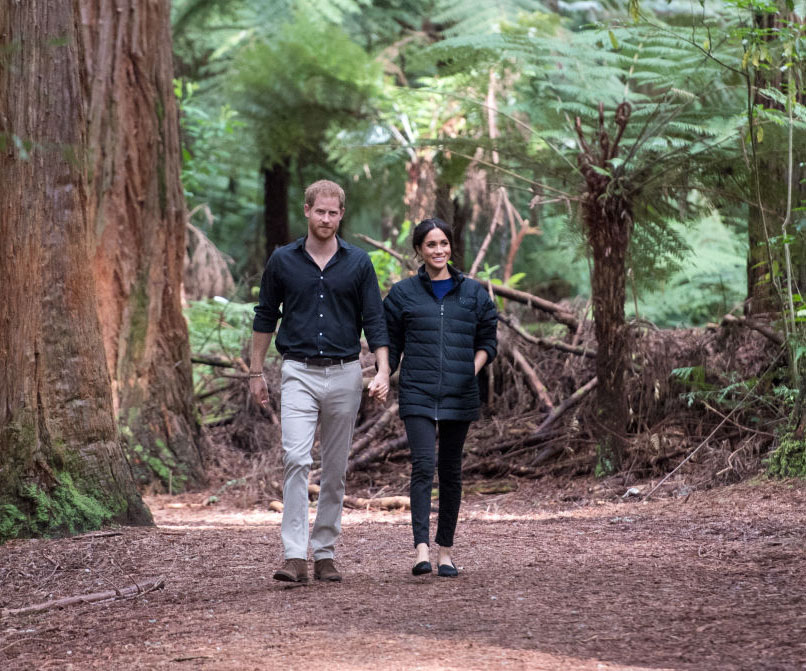Prince Harry has unwittingly revealed an admirable talent for photography by posting on social media a series of wildlife photographs he took, in celebration of Earth Day.
On he and Duchess Meghan’s Instagram account @Sussexroyal Prince Harry shared eight photographs that show some of the world’s most endangered species and ecosystems on his and Meghan, Duchess of Sussex’s, Instagram page.
The popular royal, who is passionate about global conservation and the protection of wildlife, used an image that was taken during he and Duchess Meghan’s 2018 tour of New Zealand, when the couple visited Rotorua’s majestic The Redwoods – Whakarewarewa Forest, as the hero image for the post.
The post reads: “Today is #earthday – an opportunity to learn about, celebrate and continue to safeguard our planet, our home.
“The above, Their Royal Highnesses in Rotorua, New Zealand. Of the 170 different species originally planted in the early 1900’s, only a handful of species, including these majestic Redwoods, remain today.
“Next, we invite you to scroll through a series of 8 photos taken by The Duke of Sussex©️DOS sharing his environmental POV.”
Each of the eight images is explained:
1. Africa’s Unicorn, the rhino. These magnificent animals have survived ice ages and giant crocodiles, amongst other things! They have adapted to earth’s changing climate continually for over 30 million years. Yet here we are in 2019 where their biggest threat is us.
2. A critical ecosystem, Botswana’s Okavango Delta sustains millions of people and an abundance of wildlife. Huge bush fires, predominantly started by humans, are altering the entire river system; the ash kills the fish as the flood comes in and the trees that don’t burn become next year’s kindling.
3. Desert lions are critically endangered due partly to human wildlife conflict, habitat encroachment and climate change. 96% of mammals on our 🌍 are either livestock or humans, meaning only 4% remaining are wild animals.
4. Orca and Humpback whale populations are recovering in Norway thanks to the protection of their fisheries. Proof that fishing sustainably can benefit us all.
5. Roughly 3/4 of Guyana is forested, its forests are highly diverse with 1,263 known species of wildlife and 6,409 species of plants. Many countries continue to try and deforest there for the global demand for timber.
6\ .We all now know the damage plastics are causing to our oceans. Micro plastics are also ending up in our food source, creating not just environmental problems for our planet but medical problems for ourselves too.
7. When a fenced area passes its carrying capacity for elephants, they start to encroach into farmland causing havoc for communities. Here @AfricanParksNetwork relocated 500 Elephants to another park within Malawi to reduce the pressure on human wildlife conflict and create more dispersed tourism.
The post ends:
“Every one of us can make a difference, not just today but everyday #earthday”
In the video below you can view footage of the royal couple strolling, in awe, through Rotorua’s Redwoods.
With talk of the royal couple moving to Africa to live for up to three years after the imminent birth of their first baby, to undertake “bespoke” roles for the Commonwealth, we are sure to see many more of these types of photographs.
Harry recently shared a never-before-seen image of himself with Duchess Meghan attaching a satellite collar to an elephant in Botswana in 2017.
Harry, along with other members of the Royal family are huge advocates for the protection of the environment.
Earlier this year Prince William attended the World Economic Forum in Switzerland, where he sat with Sir David Attenborough to discuss the important of the natural world and the urgent work facing the next generation of environmental leaders.


